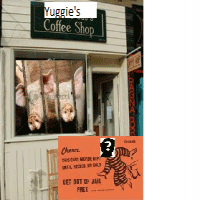Posted On: 05/19/2014 12:16:29 AM
Post# of 43068

Re: techisbest #8154
I think that Tech is correct here in that it is a bad example, yet somehow PP has the right philosophy. The thing to do is to break down the problem by thinking of all of the cash flows that would result from a P2O implementation.
For NPV (Net Present Value) analysis, which is the easiest, just discount the cash flows back to time zero using a Discount Rate. This rate represents the rate at which money can be borrowed from the bank to finance the project and also the Required Rate of Return. It is a concept... go with it. 5% seems reasonable.
Personally, I don't think there is enough specific information to do this analysis in the JBI financial statements.
I can even get TBG to incorporate these cash flows into his spreadsheet to see what the result is.
See my initial thoughts below... what else is there? I won't disagree unless it is really outrageous..
Assumptions
- The customer has adequate feedstock available internally, so the cost is zero.
- The customer has to procure HTF
Cash Flows
(-ve)
- initial Construction/ Commissioning/ Startup Cost. Soup to nuts. This would be an initial negative cash flow that the project is simply trying to get back with a suitable ROI.
- Operating Costs. The transition from Projects to Operations is quits a challenging one. The two departments think differently and are basically indifferent worlds.
- cost of HTF. Unless recycled oil is somehow a product, this is part of Operating Cost.
(+ve)
- Cost Savings from elimination of cost of waste plastic disposal.
- Revenue from Sales. OR
- Cost savings from elimination of need to procure fuel externally
For NPV (Net Present Value) analysis, which is the easiest, just discount the cash flows back to time zero using a Discount Rate. This rate represents the rate at which money can be borrowed from the bank to finance the project and also the Required Rate of Return. It is a concept... go with it. 5% seems reasonable.
Personally, I don't think there is enough specific information to do this analysis in the JBI financial statements.
I can even get TBG to incorporate these cash flows into his spreadsheet to see what the result is.
See my initial thoughts below... what else is there? I won't disagree unless it is really outrageous..
Assumptions
- The customer has adequate feedstock available internally, so the cost is zero.
- The customer has to procure HTF
Cash Flows
(-ve)
- initial Construction/ Commissioning/ Startup Cost. Soup to nuts. This would be an initial negative cash flow that the project is simply trying to get back with a suitable ROI.
- Operating Costs. The transition from Projects to Operations is quits a challenging one. The two departments think differently and are basically indifferent worlds.
- cost of HTF. Unless recycled oil is somehow a product, this is part of Operating Cost.
(+ve)
- Cost Savings from elimination of cost of waste plastic disposal.
- Revenue from Sales. OR
- Cost savings from elimination of need to procure fuel externally
